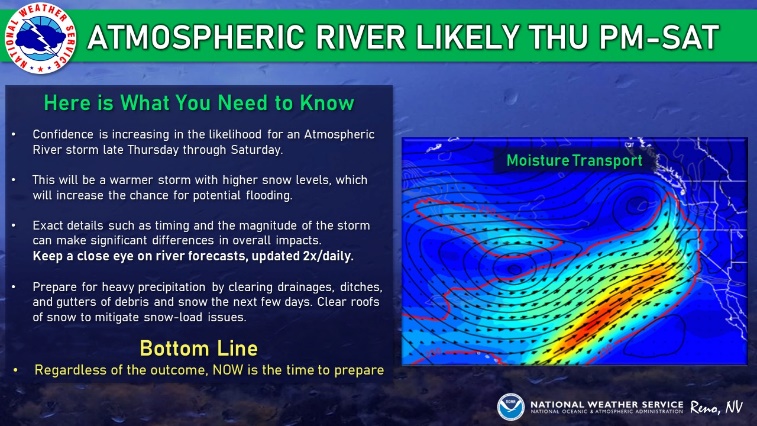Safe Snow Removal
March 8, 2023 | Member Submitted
Press release from North Lake Tahoe Fire Protection District.

After the storm this weekend and another one on the way, which is looking like a warmer wetter pattern, there are concerns about the wet snow and precipitation adding to the snow load on structures.
Please utilize any breaks in storm systems for snow removal including the fire hydrant closest to your home and/or commercial building, gas meter and, roof.
Our crews are out every day shoveling fire hydrants, please help us and #Adopt-A-Hydrant near your home and/or commercial building. By adopting a fire hydrant, you are helping to make our community safer.
Consider the following:
- Adopt-A-Hydrant closest to your home and/or commercial property and keep it clear of snow.
- Know where your gas meter shed is located and keep it clear. Buildup of snow around natural gas meters and piping, as well as falling ice and snow from rooftops, can create hazards for natural gas customers. Promptly clear snow or ice build-up around meters. Use a broom, not a shovel, whenever possible to avoid causing damage. Keep rooftop areas above natural gas meters and piping clear of ice, icicles and/or falling snow to prevent damage.
- Snow accumulations can fall and harm/kill you, depending on their size. Clear roofs of excessive snow and ice buildup, being careful not to damage vents and electrical supplies to the building. Clearing the roof can be dangerous so residents are advised to leave this work to professionals.
- Be aware that a roof may collapse with little or no warning. The following warning signs could indicate that you have a danger of roof collapse. You should immediately evacuate the building and notify your local building official, fire department, or contact a structural engineer to determine if the building is safe if you observe the following:
- severe or new roof leaks.
- cracked or split wood members.
- bends or ripples in metal supports
- recent cracks in walls, gypboard or masonry.
- cracks in welds of steel construction.
- sprinkler heads pushed down below ceiling tiles.
- doors that pop open.
- doors or windows that are difficult to open.
- bowed utility pipes or conduits attached to the ceiling; or creaking, cracking, or popping sounds.
- Keep all exits clear of snow, so that occupants can escape quickly if a fire, or other emergencies, should occur. Keep in mind that windows should be cleared to allow a secondary means of escape in case the primary means of escape is blocked by fire. Keeping exits clear also allows emergency workers to gain access to your building.
o Keep all chimneys and vents clear to prevent carbon monoxide from backing up into the building. Some vents, such as pellet stove vents, may exit the building through a wall and are susceptible to being blocked by excessive snow buildup.
Helpful Contact Phone Numbers/Websites:
- NV 511 Traveler Information System – Call 511 within Nevada or 877-NVROADS outside of Nevada, www.safetravelusa.com/nv
- CAL TRANS Road Conditions – Call 800/427-7623, http://www.dot.ca.gov/hq/roadinfo/
- Incline Village General Improvement District (IVGID) Public Works – Call 775/832-1203, https://www.yourtahoeplace.com/ivgid
- Washoe County Sheriff’s Office (WCSO) – Call 775/328-3001, https://www.washoesheriff.com/
- North Lake Tahoe Fire Protection District (NLTFPD) – Call 775/831-0351, www.nltfpd.org
- Southwest Gas (SWG) Emergency Dispatch – 800/772-4555 (Northern Nevada and California), https://www.swgas.com/
- NV Energy – Call 775/834-4100, https://www.nvenergy.com/
- Liberty Utilities – Call 800/782-2506, https://libertyutilities.com/
- Sierra Avalanche Center – Call 530-587-3558, ext. 257 https://www.sierraavalanchecenter.org/contact-us
- Washoe County Emergency Management – Call 775/337-5898, https://www.washoecounty.gov/em/
- Washoe County Community Services/Snow & Ice/Where’s My Plow/IVCB Winter Parking – https://www.washoecounty.gov/csd/operations/roads/Snow%20and%20Ice/index.php
- Code Red Regional Alert Notification – https://www.washoecounty.gov/em/RegionalAlerts.php
IN AN EMERGENCY, CALL 911

